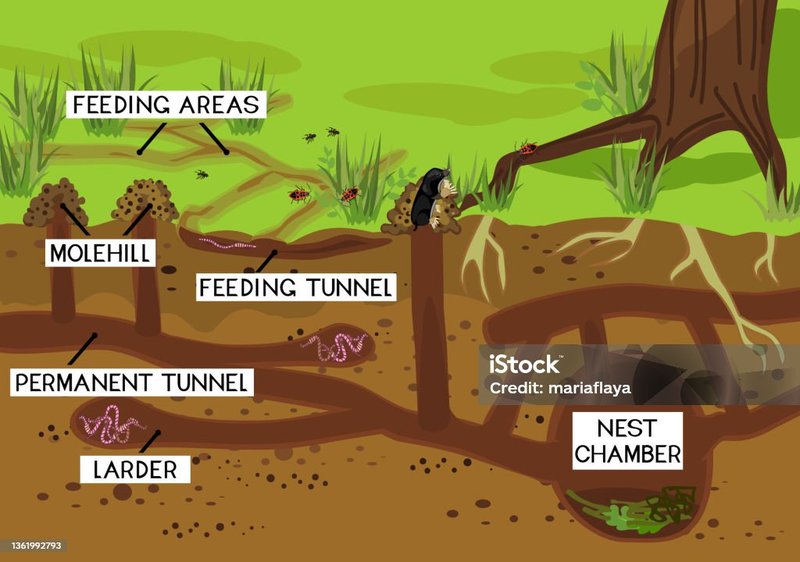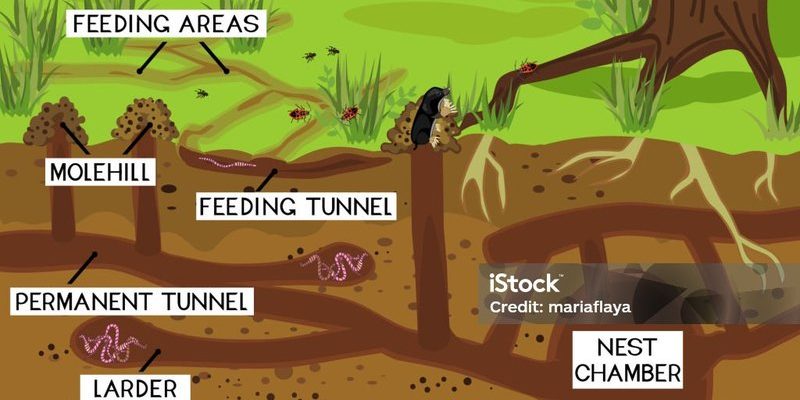
Let’s dive into how these worm-made tunnels affect soil structure. Honestly, it’s fascinating! Earthworms are nature’s unsung heroes, and understanding their tunnels can give us a whole new perspective on gardening, farming, and even environmental health. So grab a cup of coffee and let’s explore this underground world!
What Are Earthworm Tunnels?
Earthworm tunnels, often referred to as burrows, are fascinating structures formed by these little creatures as they move through the soil. Picture a worm wriggling through the dirt; as they munch on organic matter, they create pathways that allow air and moisture to circulate. These tunnels can vary in size, depending on the type of earthworm and the soil type. Some tunnels can be tiny, just a fraction of an inch, while others can be quite substantial, sometimes reaching several feet deep!
These burrows are essential not just for the worms but for the entire ecosystem. They act like **natural aeration systems**, making it easier for water and nutrients to penetrate the soil. When it rains, these tunnels help prevent water from pooling on top of the ground, allowing it to seep in and nourish plants. The presence of earthworm tunnels is a clear indicator of healthy soil—if you’ve got worms, you’ve likely got good dirt!
The Role of Earthworms in Soil Health
Earthworms are often called the “soil engineers” of our planet, and for good reason! When they eat organic matter like dead leaves and decomposing plants, they break it down in their digestive systems. This process turns it into nutrient-rich compost that’s ready to nourish the soil. You might be wondering how this all connects to soil structure.
As earthworms digest materials, they also produce casting, which is basically worm poop. Don’t let the name fool you; this castings are packed with nutrients and beneficial microorganisms. These castings help improve soil structure by increasing its ability to retain moisture and aerate the ground. Healthy soil means healthier plants, and by boosting nutrient levels through their activities, earthworms are doing nature a huge favor.
How Earthworm Tunnels Improve Soil Structure
So, how exactly do these tunnels impact soil structure? First off, they create space for air, which is vital for soil-dwelling organisms, like bacteria and fungi, that help break down organic matter. Good soil structure means that air can easily circulate, which is crucial for root health. Plants need a balance of air and moisture to thrive, and earthworm tunnels help maintain that balance.
Additionally, the burrows help improve water drainage. When it rains, the water can move through the tunnels, reducing the risk of surface runoff. This is important because excess runoff can erode soil and wash away essential nutrients. The tunnels also allow water to reach deeper layers of soil, which can be particularly beneficial during dry spells. Stronger roots mean plants can access moisture and nutrients from deeper soil layers.
The Impact of Soil Structure on Plant Growth
Now that we know how earthworm tunnels contribute to soil structure, let’s talk about why that matters for plant growth. A well-structured soil provides a rich environment for plants. With aeration from those tunnels, roots can easily spread out, making it easier for them to absorb water and nutrients.
Furthermore, a healthy soil structure encourages a diverse community of organisms. These tiny helpers break down organic matter and release nutrients back into the soil. When worms are active, they promote this kind of biodiversity, which is essential for robust plant growth. If you’ve ever seen a yard full of lush grass or vibrant flowers, you can bet that healthy soil, thanks in part to earthworms, is behind it!
How Soil Type Affects Earthworm Activity
Not all soils are created equal, and some types are more welcoming to earthworms than others. For instance, sandy soils tend to drain quickly and may not hold nutrients as well. This can lead to fewer earthworms living in those areas, as their food source may be limited. On the other hand, clay soils, while nutrient-rich, can be quite compact and make it hard for worms to move around.
Loamy soils, which are a mix of sand, silt, and clay, are perfect for earthworms. They offer balanced drainage and nutrient retention, creating an ideal habitat for these little creatures. If you’re keen on attracting earthworms to your garden, focus on amending your soil to improve its structure. Adding organic matter like compost can help create a supportive home for worms, leading to better soil health.
Protecting Earthworm Populations
Given the important role earthworms play in maintaining soil structure and health, it’s crucial to protect their populations. You might be surprised by how vulnerable they are to our everyday choices. For example, the excessive use of pesticides and herbicides can harm earthworm populations and disrupt their natural ecosystems.
Additionally, soil erosion and poor land management can destroy their habitats. To support these tiny helpers, consider using organic gardening methods. This means avoiding chemicals and instead relying on natural compost and mulch. It might take a little extra effort, but your plants—and the worms—will thank you!
Understanding earthworm tunnels and soil structure really opens your eyes to the amazing world beneath our feet. These little creatures are more than just squirmy nuisances; they’re vital for healthy, thriving soil. By creating tunnels, they help aerate the soil, improve drainage, and boost nutrient levels. Healthy soil leads to healthier plants, and that’s something every gardener can appreciate.
So, the next time you’re in your garden or anywhere with dirt, remember that beneath the surface, there’s a bustling city of earthworms working hard. Embrace these underground helpers, and watch your garden flourish as a result!

